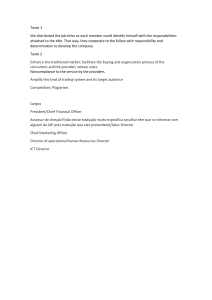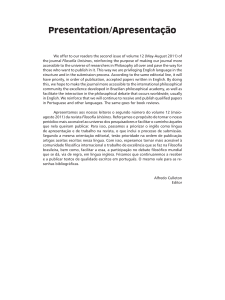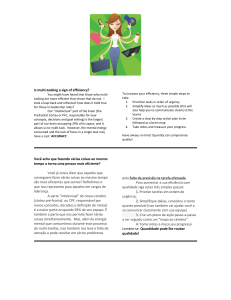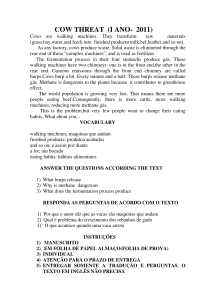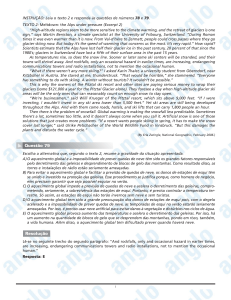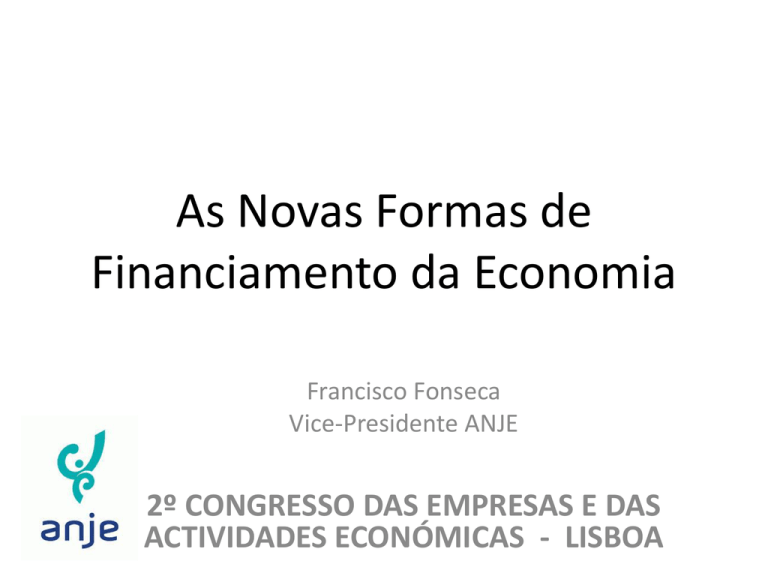
As Novas Formas de
Financiamento da Economia
Francisco Fonseca
Vice-Presidente ANJE
2º CONGRESSO DAS EMPRESAS E DAS
ACTIVIDADES ECONÓMICAS - LISBOA
O que são?
• Formas alternativas de financiamento incluem
uma variedade de modelos de financiamento
que emergiram fora dos sistemas tradicionais
de financiamento, e que ligam pessoas à
procura de dinheiro a pessoas que estão
disponíveis para investir, habitualmente
através de plataformas online ou websites.
Tamanho do Mercado (Reino Unido)
Fonte: Understanding Alternative Finance - The UK Alternative Finance Industry Report 2014
Formas alternativas de Financiamento
Fonte: Understanding Alternative Finance - The UK Alternative Finance Industry Report 2014
1. P2P Business Lending
Empréstimo de particulares a empresas
Fonte: Understanding Alternative Finance - The UK Alternative Finance Industry Report 2014
2. P2P Consumer Lending
Particulares utilizam uma plataforma online para pedir emprestado
pequenos montantes a credores individuais
Fonte: Understanding Alternative Finance - The UK Alternative Finance Industry Report 2014
3. Invoice Trading
As empresas vendem as suas faturas com um desconto, a um grupo de
investidores individuais ou institucionais
Fonte: Understanding Alternative Finance - The UK Alternative Finance Industry Report 2014
4. Equity Crowdfunding
Venda de uma participação em um negócio a um número de investidores,
em troca de investimento.
Fonte: Understanding Alternative Finance - The UK Alternative Finance Industry Report 2014
5. Community Shares
Investimento em Capital Social de sociedades de projectos comunitários ou
cariz social
Fonte: Understanding Alternative Finance - The UK Alternative Finance Industry Report 2014
6. Reward Crowdfunding
Doação, com a expectativa de receber em troca de sua contribuição, uma
recompensa (não financeira) ou produto tangível, em data posterior.
Fonte: Understanding Alternative Finance - The UK Alternative Finance Industry Report 2014
7. Pension-Led Funding
Permite que os donos/directores de PMEs utilizem os seus fundos de pensão
acumulados, para investir em seus próprios negócios.
Fonte: Understanding Alternative Finance - The UK Alternative Finance Industry Report 2014
8. Debt-Based Securities
Quem empresta recebe uma obrigação de dívida colateralizada tipicamente
pago num longo período de tempo.
Fonte: Understanding Alternative Finance - The UK Alternative Finance Industry Report 2014
9. Donation CrowdFunding
Doação de pequenas quantias para atingir financiar um projeto de caridade,
não recebendo qualquer retorno financeiro ou material em troca.
Fonte: Understanding Alternative Finance - The UK Alternative Finance Industry Report 2014
Futuro?
• 2015: £4.4b
• Utilizadores actuais dizem que irão utilizar
mais estes meios no futuro
• > 50% dos financiadores P2P pretendem
emprestar mais em 2015 do que em 2014
• > 86% de quem pede emprestado pretende
continuar a fazê-lo, mesmo que banco ofereça
condições semelhantes
Futuro?
• 42% das pessoas desconheciam estas formas
alternativas de financiamento
• Apenas 14% já tinham utilizado estas formas
alternativas de financiamento
• 44% das PMEs conhecem esta alternativa,
apenas 10% a utilizaram para se financiarem
2º CONGRESSO DAS EMPRESAS E DAS ACTIVIDADES ECONÓMICAS - LISBOA
Desafios
• 60% dos particulares disseram que não
investiriam o seu dinheiro neste tipo de
plataformas
– Risco percepcionado
– Falta de informação acerca das pessoas e das
empresas em que iriam investir
Fonte: Understanding Alternative Finance - The UK Alternative Finance Industry Report 2014
Muito Obrigado
Francisco Fonseca
[email protected]
Different motivations driving usage of alternative finance
• The motives behind fundraisers turning to alternative sources of
finance also vary depending on the model. Those who fundraised
through donation and reward–based crowdfunding valued most
having more control over their projects. In contrast, P2P business
lending borrowers and entrepreneurs that had fundraised via
equity–based crowdfunding valued the speed at which they could
access funding and how easy the platform was to use. For P2P
consumer borrowers the primary motive was securing a more
favourable interest rate as well as a higher quality of customer
service. Those trading invoices through alternative finance
platforms did so largely to source working capital; whilst those
utilising pension–led finance valued the ability to invest their own
pension into their businesses.
2º CONGRESSO DAS EMPRESAS E DAS ACTIVIDADES ECONÓMICAS - LISBOA
Different motivations driving usage of alternative finance
• In a similar vein, the motivations for funding also differed significantly
across the industry. Those in P2P lending and equity–based crowdfunding
were primarily driven by the prospect of financial returns with less
concern for backing local businesses or supporting social causes. In
contrast those in reward and donation–based crowdfunding were highly
motivated by fundraisers’ ideas
• Different motivations driving usage of alternative finance and the
potential to make a positive difference with their money. For instance, the
prospect of obtaining financial return was ‘important’ or ‘very important’
to 82 per cent of P2P business lenders and to 96 per cent of investors in
equity–based crowdfunding, whereas this was only ‘important’ or ‘very
important’ to 24 per cent of people who bought community shares.
Survey responses from users of donation–based crowdfunding highlight
how only 22 per cent of people have funded one or more projects that
they would benefit from themselves, whereas 46 per cent have funded
projects that others in or outside their local area could use.
2º CONGRESSO DAS EMPRESAS E DAS ACTIVIDADES ECONÓMICAS - LISBOA
Increasing philanthropic giving and volunteering
•
Alternative finance models also facilitate significant giving to good causes
predominantly through the reward, community shares and donation–
based models as well as to renewable energy ventures through debt–
based securities. For donations and reward–based crowdfunding just 23
per cent and 21 per cent stated the money they donated or pledged would
otherwise be used for charitable giving, indicating that alternative finance
is providing significant additional giving to social good projects. As well as
the funds provided, crowdfunding is helping increase volunteering and
social action. Our results show that 29 per cent of backers on donation–
based crowdfunding platforms had also given advice and feedback to
campaigns and 27 per cent had offered to help or volunteer with the
project. Correspondingly, 34 per cent of fundraisers have seen an increase
in volunteerism after they fundraised through donation–based
crowdfunding.



